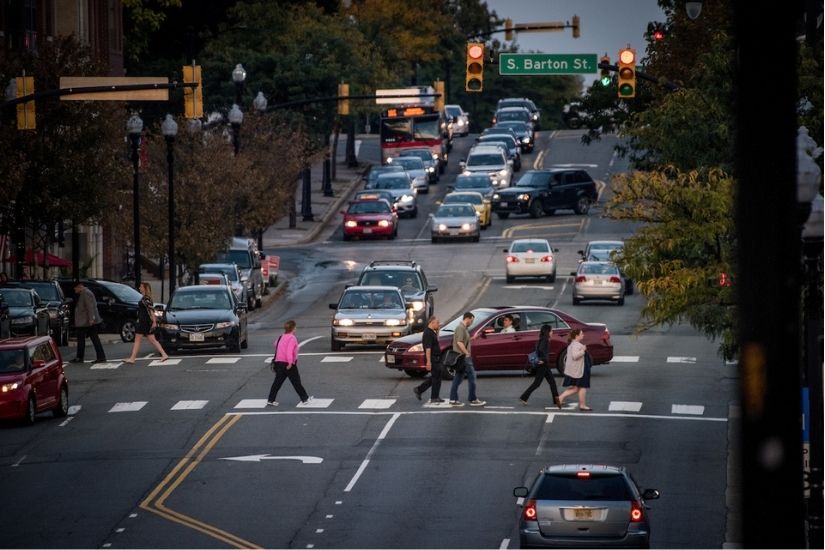Vision Zero Explained
Understand why Vision Zero is important and what you can do to keep yourself and others safe while traveling.
Vision Zero aims to prevent traffic-related injuries and deaths. It is an international movement that originated in Sweden in 1997. Since adopting a Vision Zero strategy in summer 2019, Arlington County has sought community input and drafted a plan laying out proposed actions the County and other stakeholders will take to achieve a safer transportation system for all.

At its most fundamental level, the Vision Zero strategy is about making Arlington County—our home—a safe place for everyone to move around, whether you walk, bike, drive, or take transit. Here’s what you need to know:
Traffic Violence Has Lasting Effects
Although Arlington is an award-winning walkable community, crashes do happen. Last year, over 100 people were injured while walking and 4 were killed. The effects of a crash on the individuals involved and their families cannot be overestimated. Pedestrian crash survivors often struggle with post-traumatic stress disorder and permanent physical challenges. Years after a crash, it is hard for many victims of traffic violence and their families to even talk about what happened. The goal is to have safer streets so none of our friends and neighbors will have to endure the painful aftermath of a crash.
Arlington’s Vision Zero Action Plan Draft
Arlington County’s Vision Zero Action Plan draft affirms that, “people should not be seriously injured or killed while traveling on our streets and trails.” It lays out 96 action items Arlington County and its partners will take on to meet the goal of zero transportation-related deaths and serious injuries on our streets and trails by 2030. Many of these action items involve using data to identify safety trends and then actively addressing areas of concern. The County will also ensure that construction and transportation projects are designed with safety in mind.
How You Can Make Arlington Safer
While a Vision Zero strategy focuses on creating policies, systems, and improvements in the built environment to support greater mobility and access for all, there are still steps you can take to protect yourself and fellow citizens from traffic violence:
1. Slow your overall speed.
Speed is a major factor in crashes, as are distractions related to drinking alcohol.
2. Use extra caution when traveling after dark.
Most crashes occur at night.
3. Check to make sure no cars are making left turns into the crosswalk while crossing.
Many crashes between vehicles and people walking occur during left hand turns.
4. Model “PAL” behaviors (predictable, alert, and lawful).
It’s especially important for children no matter how you’re getting around.
5. Use extra caution when crossing arterial roadways on foot.
This includes roads such as Carlin Springs Rd., Wilson Blvd., Columbia Pike, and Glebe Rd.
Weigh in on Arlington County’s Vision Zero Action Plan draft by February 28.
Make a Commitment to Safety
Commit to doing your part as a bicyclist, driver, or person walking by filling out the form below and becoming a PAL. We’ll keep you up to date on traffic laws, provide safety tips to help you travel in and around Arlington with confidence, share opportunities to volunteer at upcoming events, and so much more.
Sam Kittner/Kittner.com









Comments are closed here.
To prevent spam, comments will be approved before appearing on the post. If you have a comment or question, but do not want it to be published, please email WalkArlington.